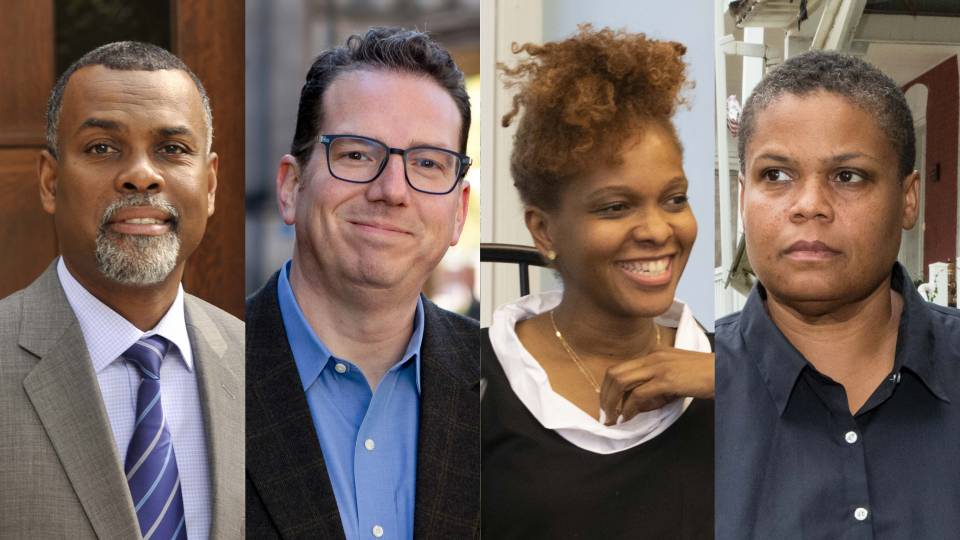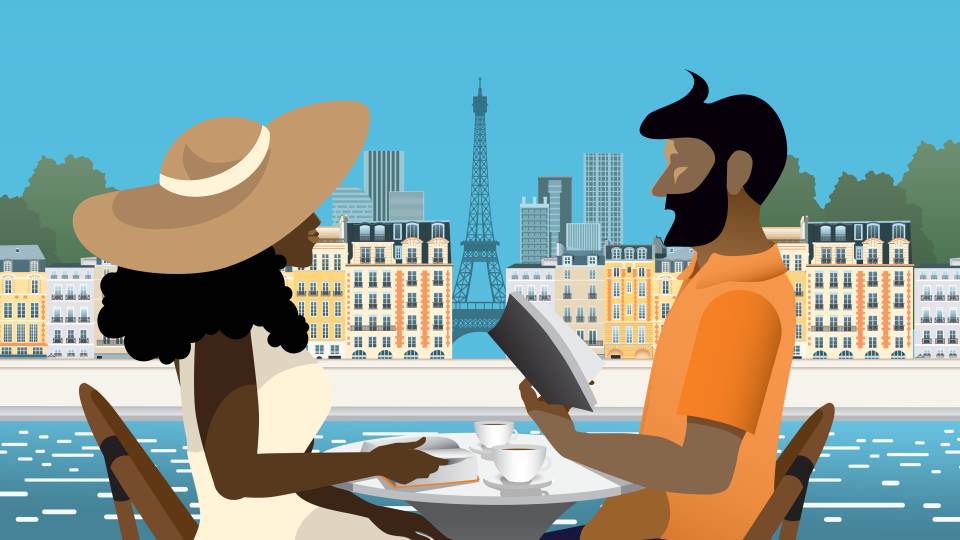Six Princeton professors talk about how the books on their shelves relate to their work and share what’s on their summer reading lists. Many of their book choices reflect their scholarly research and personal perspectives on current crises related to the COVID-19 pandemic and racial injustice.
Read about the professors' book choices below.
Aisha Beliso-De Jesús
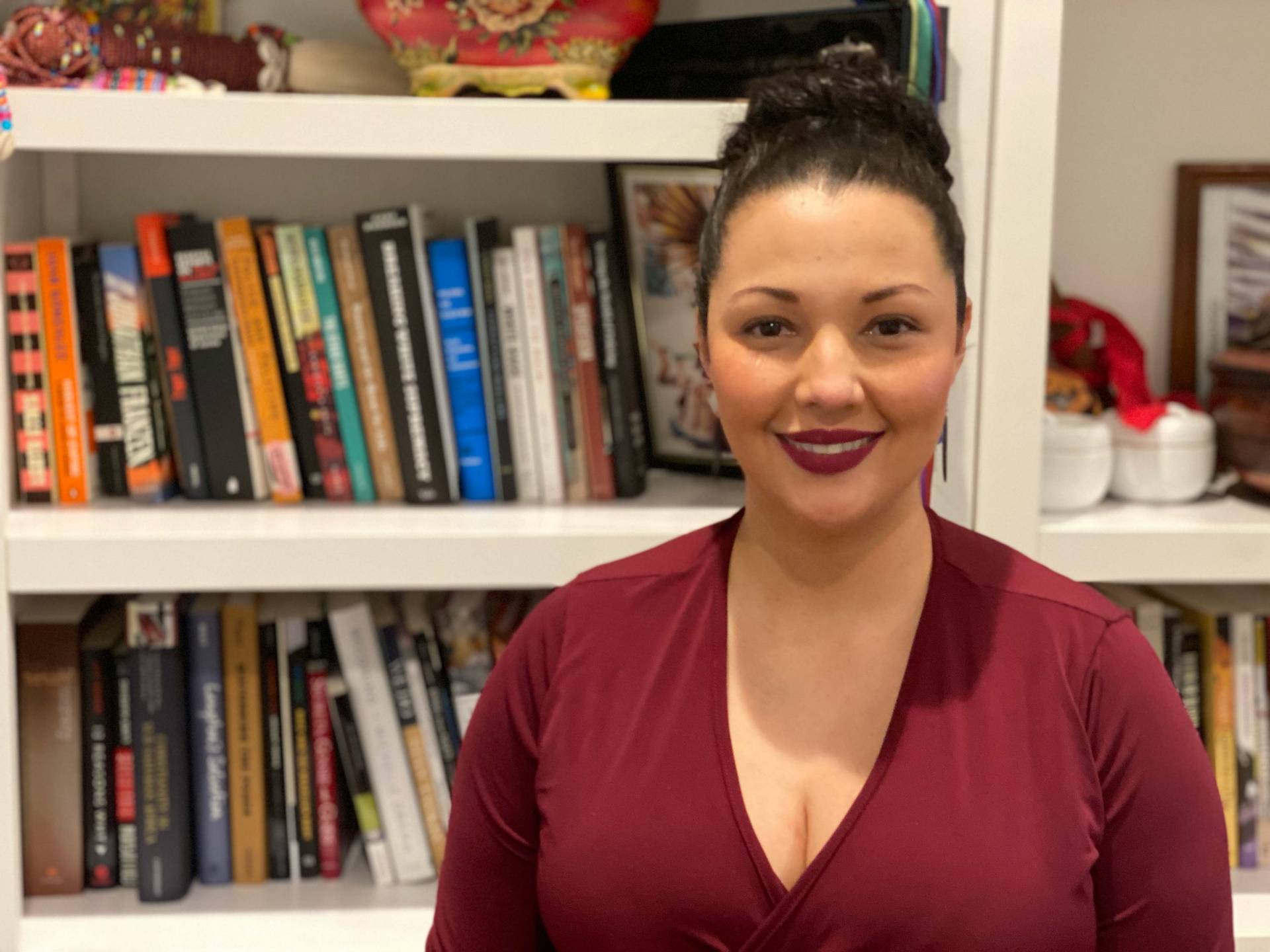
Aisha Beliso-De Jesús, professor of American studies
Tell us about a particular book on your shelf.
“Colonialism in Global Perspective” by Kris Manjapra examines war, militarization, extractive economies, migrations and creative resistance to oppression globally. The book intersects with my own analytic on policing and criminalization of African diaspora religions, which also thinks about these issues globally and transnationally. As a scholar committed to a transnational approach to American studies of empire, I think this book reflects how we cannot presume that the modern world has developed in isolation from histories of underdevelopment and conquest.
This book shows how histories of conquest, empire, racial slavery and settler colonialism across the Americas, Africa, Asia and Europe must be understood as entwined constellations that allow us to understand contemporary social issues and struggles. I’m excited to incorporate this book into my teaching — including “Introduction to American Studies,” as well as courses in Latino/a/x studies.
What’s on your summer reading list?
My summer reading list includes:
- “The Book of Delights” by Ross Gay
- “White Rage” by Carol Anderson
- “How to Be an Antiracist” by Ibram Kendi
- “Politics of Rightful Killing” by Sima Shakhsari
- “Deathless Divide” (Dread Nation, Book 2) by Justina Ireland
- “Emergent Strategy: Shaping Change, Changing Worlds” by adriene maree brown
- “My Mommy Medicine,” a children’s book by Edwidge Danticat
Jeff Nunokawa

Jeff Nunokawa, professor of English
Tell us about a particular book on your shelf.
I'll tell you one writer whose work I'll be reading a lot of this summer: James Baldwin. I've just started re-reading “Another Country,” and I plan on re-reading “Giovanni's Room” and a lot of the essays. I'm writing a book now about some of the historical hopes and burdens attached to mixed race romances in the middle of the last century, and no one has taught me more on the subject than Baldwin. So there's that.
Baldwin's work is also hugely important for my teaching right now, including the teaching of myself. Over the last several years most people I know (including myself) have been more or less overwhelmed by political anger, whether in the form of rage-tweeting or the often silent (silenced, silencing) revulsion one feels in the face of such tweetings. I've tried to get the students in my class on the history of the essay form to think about writers as disparate as Francis Bacon, William Hazlett and Baldwin as practitioners of forms of writing we might call the Anti-tweet. What I mean are essays that reflect on the historical sources of anger and some possible solutions for it; essays that show how the feeling of dumb anger can be converted into articulate thought about what's wrong with the world and how to make it better.
What’s on your summer reading list?
Montaigne, for starters. He's perfect summer reading! You can take him to the beach and learn a lot about topics ranging from under-appreciated body parts ("Of Thumbs") to the ins and outs of Roman poetry ("On Some Verses of Virgil") all while doing whatever else you do at the beach. I can't get enough of this delightful and instructive pioneer of the essay form.
Laurence Ralph
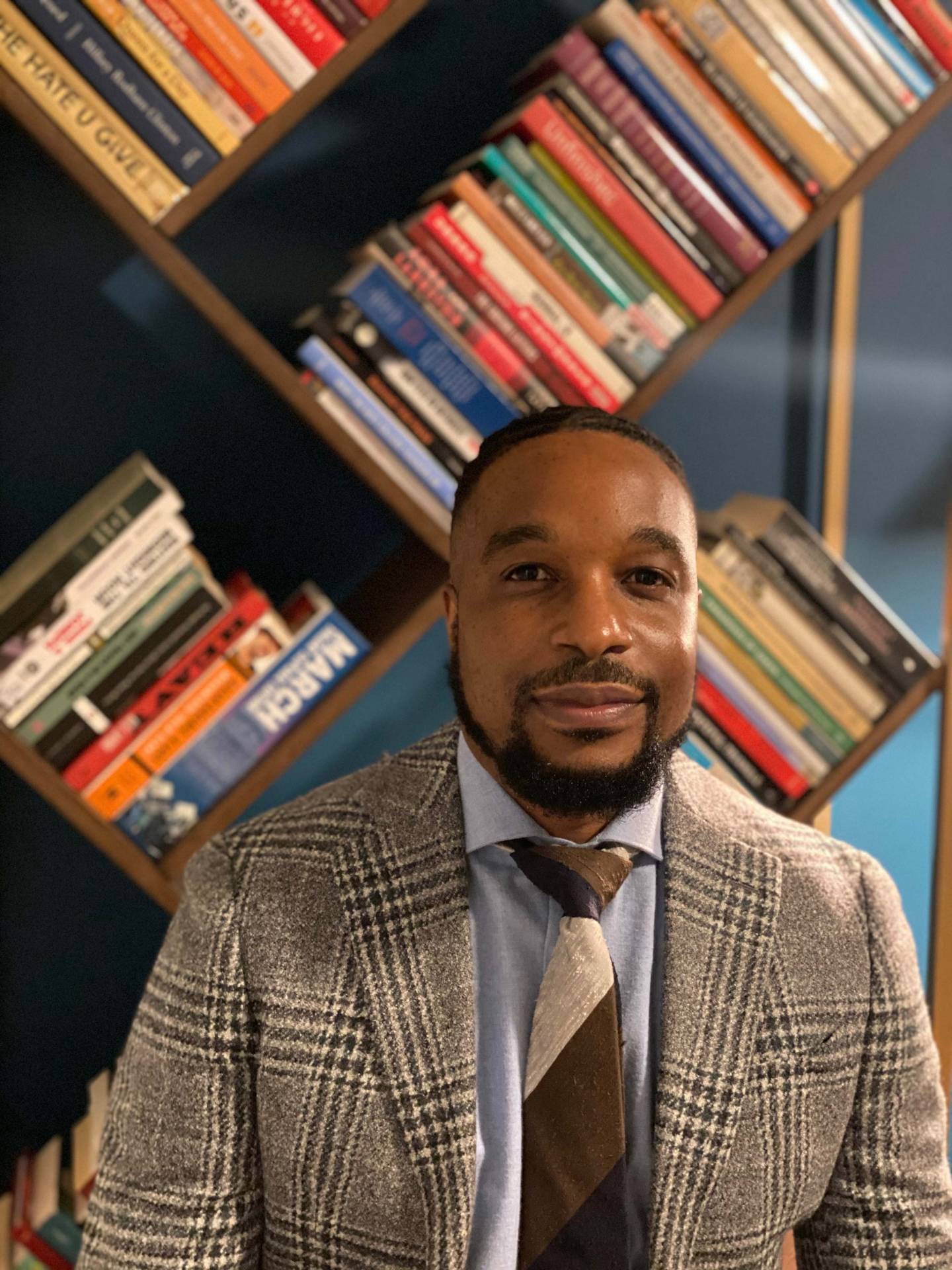
Laurence Ralph, professor of anthropology, author of “The Torture Letters: Reckoning with Police Violence” (also adapted for an animated op-doc in The New York Times)
Tell us about a particular book on your shelf.
“Occupied Territory: Policing Black Chicago from Red Summer to Black Power” by Simon Balto ties into my own work because it gives a specific genealogy of policing in Chicago, showing that something as horrific as police torture is a historical outgrowth of the injustice that has always germinated in the city. I’m excited about the book because of the way it ties police repression to social movements, such as Black Power, that helps us imagine how we might transform society to make it more equitable.
The book just came out but next time I teach my course “Policing and Militarization Today,” I will assign this book. I like to teach my students about how they are living with history — that is, the problems of the past are not actually past us at all.
What’s on your summer reading list?
All the books on my summer reading list deal with anti-Black racism and responses by people who are attempting to transform societies — from the US to Jamaica to Brazil. They push us to think beyond liberal notions of reform and to imagine the world anew.
- “Afro-Paradise: Blackness, Violence and Performance in Brazil” by Christen Smith [a 1999 Princeton alumna]
- “Progress Dystopia: Abolition, Antiblackness and Schooling in San Francisco by Savannah Shange
- “Political Life in the Wake of the Plantation: Sovereignty, Witnessing, Repair” by Deborah Thomas
- “1919” by Eve Ewing
Keith Wailoo

Keith Wailoo, the Henry Putnam University Professor of History and Public Affairs
Tell us about a particular book on your shelf.
I teach history and public policy, with a focus on health and society, and am drawn to books that show how the past can inform and guide the present.
In the current health crisis, “The Cholera Years: The United States in 1832, 1849, and 1866” by Charles Rosenberg is an old classic in the history of medicine that reads like a story for the present moment — that is, it sheds light on recurring patterns in how Americans respond to pandemic threats. Then as now, there was "shock" about the revealed inequalities and the devastation among the urban populations; there was plenty of blame and xenophobia; there was puzzlement about why cherished institutions seemed powerless to mitigate the damage; and there were vocal calls for reform and renewal.
The story is as applicable to understanding social responses to HIV/AIDS in the early years as it is to comprehending today's responses to the COVID-19 coronavirus pandemic. This is the book that prompted me to study history of medicine more than three decades ago, and to chart my own course to study health and society. Charles was my Ph.D. adviser. “Pandemic, Creating a Usable Past: Epidemic History, COVID-19, and the Future of Health, the conference I recently organized (May 8-9, 2020) at Princeton began with a conversation with him — focusing on echoes of the past in the present crisis.
What’s on your summer reading list?
This summer I won't have as much time for reading as I would like because I'm finishing a book, titled “Pushing Cool: Big Tobacco, Racial Marketing, and the Untold Story of the Menthol Cigarette,” to be published in 2021. This new work turns to the consumer marketplace and the so-called "inner city" as a place where inequalities are created.
In the next few months, whenever I'm not checking footnotes and checking page proofs, I'll be looking for inspiration and insight from a vast literature on the complexities of the U.S. Black experience — covering questions of labor to consumerism, and from social life to the cultural imagination. Among them are: Elizabeth Alexander's essays, “The Black Interior”; Esi Edugyan's novel, “Washington Black”; “Ghetto: The Invention of a Place, The History of an Idea” by Mitchell Duneier, professor of sociology at Princeton; and an excellent study by historian Nan Enstad, “Cigarettes, Inc: An Intimate History of Corporate Imperialism.”
Maria Garlock
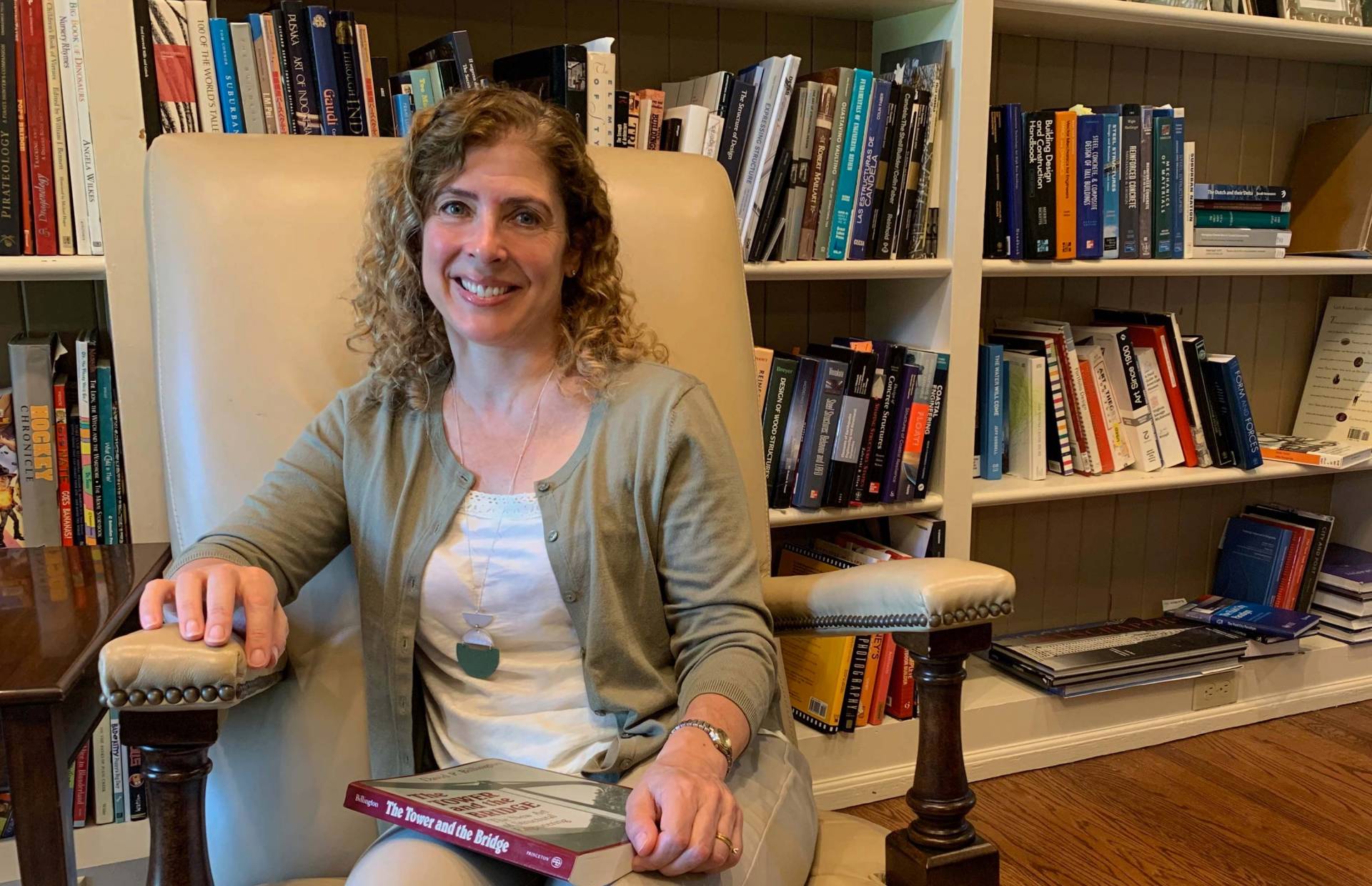
Maria Garlock, professor of civil and environmental engineering, co-director of the Program in Architecture and Engineering and head of Forbes College
Tell us about a particular book on your shelf.
“The Tower and the Bridge: The New Art of Structural Engineering,” by the late David Billington [the Gordon Y.S. Wu Professor of Engineering Emeritus] at Princeton is the book that has had the most influence on my scholarship and teaching. Through historical and modern examples, the book and Billington taught me that engineers can also be artists — engineering is a creative discipline! The best engineers integrate art into their design of buildings, bridges and long-span vaults. “Structural art,” as Billington calls it, comes from the creative imagination of the engineer, and it includes a sensitivity to the environment and the culture in which the structure will live.
The examples of structural engineering and art in the book extend from the well-known structures of the Eiffel Tower and the Brooklyn Bridge, to the lesser-known works of Robert Maillart’s Salginatobel Bridge, Pier Luigi Nervi’s Palazzetto dello Sport and dozens more. These designers illustrate that the best designs are a balance between discipline and play. As engineers, we are disciplined by our technical training to design structures that are safe and (hopefully) economical. But there is a lot of room to “play.” Despite engineering education implying otherwise, there is more than one answer to an engineering problem, so play until you find aesthetics within the disciplinary boundaries.
The book is written to be accessible to all the public, not just the engineer. The goal is to educate everyone about structural engineering and its history. In doing so, more people are challenged by their preconceived notions of engineering being a dull, soulless profession that is responsible only for performing the calculations needed to keep bridges and buildings from falling down. Billington makes his point of structural art through the people he defines as “structural artists,” with a brief biography of each and colorful examples to illustrate their resilient and playful spirit. Theirs is a spirit of resourcefulness and creativity given severe constraints, and a spirit of courage to try new forms and materials given criticism and doubt.
Billington died in 2018, but colleagues and I continue to teach his innovative engineering courses to students of all majors, and our research and scholarship have preserved his legacy of integrating art with engineering education and scholarship.
What’s on your summer reading list?
This summer I plan to finish reading a book that I started several weeks ago: “A Woman of No Importance: The Untold Story of the American Spy Who Helped Win World War II” by Sonia Purnell. It is about the tremendous courage of Virginia Hall. I enjoy reading non-fiction books about courage and perseverance; they inspire me.
In addition, recent events made it clear that I needed to further educate myself on racism and social injustice. My personal life experiences are such that I will never completely understand the depths of racism, or the fear and frustration felt by people of color, but I want to understand as much as I am capable. I selected a few books to start this educational process: “The Fire Next Time” by James Baldwin, a firsthand account of what it was like to be Black in mid-20th century urban America; “Open Season: Legalized Genocide of Colored People” by Ben Crump, which presents a front-seat view of the disparities within the American legal system for people of color; and “The New Jim Crow: Mass Incarceration in The Age of Colorblindness” by Michelle Alexander, a book that connects relevant American history to the present in telling the story of mass incarceration. I have begun to read the first two books (the third book has not arrived yet) and it is clearer than ever that empathy is not enough — more must be done.
Autumn Womack
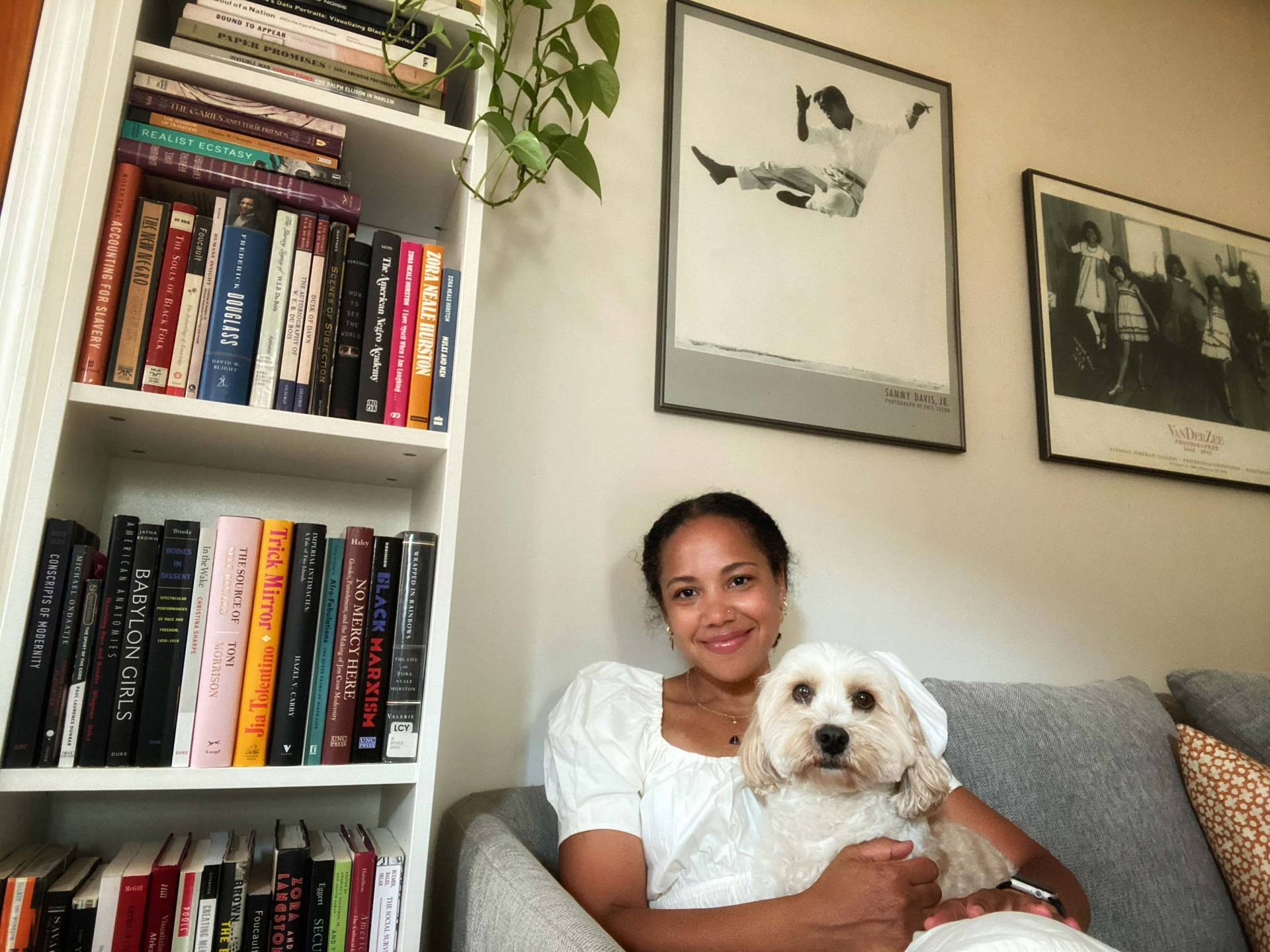
“Studying Morrison’s literature at Princeton is really such a gift,” said Autumn Womack, assistant professor of African American studies and English. “[S]tudents are consistently amazed by the idea that they are studying her work in a place that was so important to her. More than that, we have the privilege of having access to her papers in Special Collections.”
Tell us about a particular book on your shelf.
I love the 19th century’s long and winding novels. Frank Webb’s “The Garies and Their Friends” was published in 1857 and focuses a community of free African Americans living in Philadelphia; it is also the second known novel published by a black writer in the US. I love this book for all kinds of reasons — the way it slyly mobilizes sentimental fiction’s central tropes in the name of critiquing their racialized logic; the careful literary mapping of Philadelphia (which is where I grew up); and complex rendering of free Black life in the antebellum North. In its account of the city’s tense race relations, this book is also quite prescient. In one plot line, a white lawyer turned real estate speculator orchestrates acts of anti-Black violence and a race riot in order to drive down property values in African American neighborhoods, clearing the way for an early gentrification project. Every time I read this book I’m blown away by Webb’s incisive analysis of everything from Black family life to the consolidation of white supremacy in the years leading up the Civil War.
I regularly teach a class on 19th-century African American literature and this fall I’m going to include Webb’s novel for the first time. I’m planning to orient the semester’s readings toward questions of Black revolt, rebellion and resistance so that we can think together about the long and complicated history of our present moment. In addition to the explicit treatment of mob violence, “The Garies and Their Friends” also illustrates how genre conventions, aesthetics and domestic life are places where dissent is enacted. I’m excited to teach this book alongside Charles Chesnutt’s 1901 novel “The Marrow of Tradition,” which also fictionalizes a turn-of-the-century racial uprising. At the same time, I’m also going to invite students to think of the ways that a text like Harriet Jacob’s “Incidents in the Life of Slave Girl” or a publication like The Anglo-African Magazine, which was the first Black literary periodical, are also important to a long history of Black political and social movement and literary practice.
What’s on your summer reading list?
My summer reading list is always so incredibly long! I recently completely the first draft of my first book, which is on the intersection of race, data and aesthetics at the turn of the 20th century, so I have a rare moment where I can both read for fun and begin to explore new research projects. Over the course of the year I gather books that don’t directly relate to my research or teaching and carve out time to read them during the summer months.
This year I have Brit Bennett’s new novel “The Vanishing Half” at the top of my pile. Last summer I started reading Colson Whitehead’s “Nickel Boys” and I’m determined to finally finish it. I also love collections of essays and short stories. A few months back, a friend gave me a copy of Jia Tolentino’s “Trick Mirror.” I love Jia’s work for The New Yorker so I’m excited to finally settle down with this volume. For my book, I spent a great deal of time thinking about the intersection of visual technologies (like film and photography) and racial knowledge. The recent collection “Saturation: Race, Art and the Circulation of Value,” edited by C. Riley Snorton and Hentyle Yapp and just out from MIT Press, will certainly push my thinking in new directions. I also just received my copy of Ashon Crawley’s “The Lonely Letters,” which is a beautifully crafted meditation on Black intimacy, aesthetics and imagination. Ashon is an incredibly innovative thinker who is always pushing us to think about new ways of practicing care, love and relation with one another, but also institutions, structures and disciplinary formations. I’m planning to slowly make my way through this book this summer, reading a little bit each day as a kind of treat.
Finally, I’ve recently started writing on an unpublished novel by W.E.B. Du Bois called “Scorn.” Like so many of Du Bois’ works, the manuscript moves across genres and intellectual fields. I’m especially interested in the multiple ways that speculation gets mobilized in the text. To that end, and with the help of my reading group, I’m returning to formative scholarship on racial capitalism like Cedric Robinson’s “Black Marxism.”




